During summer in Utah, temperatures often rise above 100 degrees F, evaporating water collected from the winter snowfall. Choosing drought-resistant trees can help conserve water in the garden and add color to this dry region.
Planting large shade trees resistant to drought in your yard can turn it into a haven where you’re protected from the harsh sun while enjoying the landscape. Here are my top 7 picks for the best drought-resistant trees in Utah:
- Red Maple
- Hybrid Poplar
- Japanese Zelkova
- Kentucky Coffeetree
- Oak Gambel
- Pinyon Pine
- Rocky Mountain Juniper
While protecting you from the dry summer heat, shade trees also protect your home from the heat. With shade trees, your home will stay cooler inside, and you’ll spend less money and energy on air conditioning.
Botanical name: Acer rubrum
Max height at maturity: 40 – 60 feet
Max canopy spread: 40 feet
Growth Rate: 1 – 2 feet per year
Drought Tolerance: High
Life Span: 80- 100 years
Red maple is a favorite tree for Northern Utah landscapes due to both its tolerance to varying soil conditions and quick growth rate. It grows up to two feet per year and it offers a gorgeous red color during every season and contributes greatly to landscape beauty.
The red maple is accurately named since its leaves turn a vibrant red in fall, its stems turn red in winter, new leaves have a red tinge before they turn green, and it produces red flowers.
Red maple trees are good shade trees for Salt Lake City because of their large spread and drought tolerance. However, you should be careful where you plant them because the surface roots can damage structures and make lawn mowing difficult.
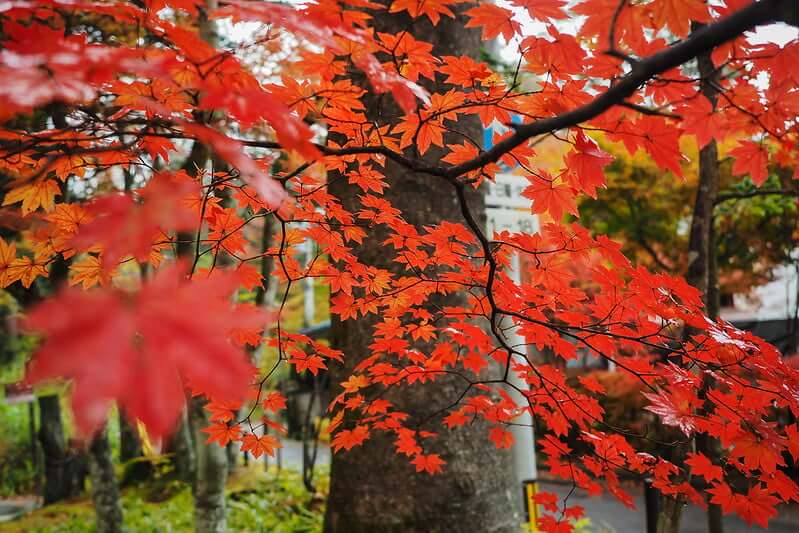
Red Maple | Elena Leong | Wikimedia Commons | CC BY-SA 2.0
2. Hybrid Poplar
Botanical name: Populus deltoides x Populus nigra
Max height at maturity: 40 – 50 feet
Max canopy spread: 30 feet
Growth Rate: 8 feet per year
Drought Tolerance: High
Life Span: 40 – 60 years
Hybrid poplars are at the top of the list for attractive, fast-growing shade trees. These beauties work well as visual screens and provide a quick route to a shady landscape with an annual vertical growth capacity of up to 8 feet.
The fast growth is, however, accountable for limbs that break easily. You should not consider planting a hybrid poplar where the branches hang over your roof or another structure that might be damaged.
Poplars tend to be short-lived, so they will not be a fit if you’re looking for a shade tree that will last for generations. This hybrid poplar also grows well in drought-ridden California and Texas.
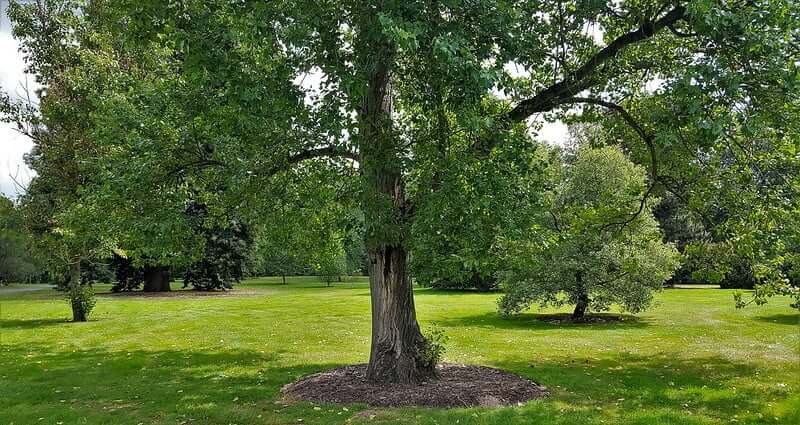
Hybrid Poplar | standhisround | Wikimedia Commons | CC BY-SA 2.0
3. Japanese zelkova
Botanical name: Zelkova serrata
Max height at maturity: 50 -80 feet
Max canopy spread: 50 – 75feet
Growth Rate: 1 – 2 feet per year
Drought Tolerance: Moderate
LifeSpan: 1000 years
The Japanese zelkova is an intriguing tree that does well in urban areas. It has peeling bark and a spreading or vase-shaped crown. Its massive spread makes it a good shade tree, and its drought tolerance makes it a fit for Salt Lake City.
This tree blooms with tiny, inconspicuous green flowers in spring at the same time that leaves appear. The Japanese Zelkova grows to a height of 50–80 feet and a spread of around 50–75 feet at maturity.
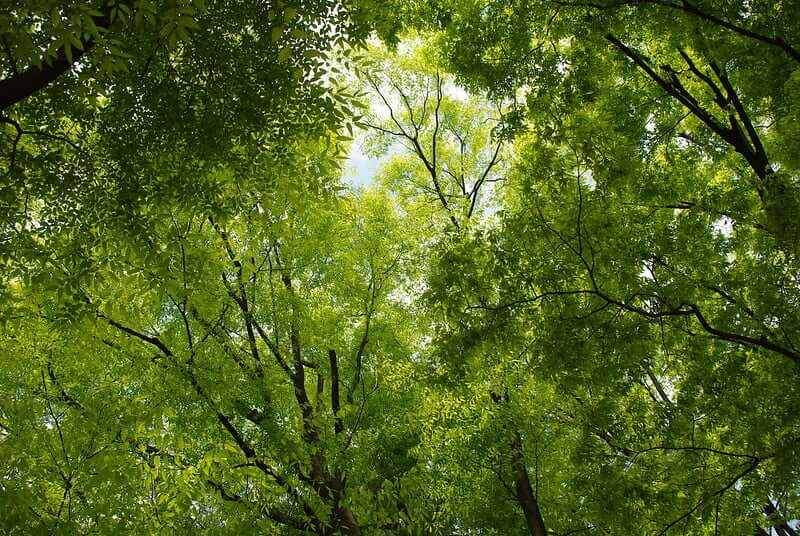
Japanese zelkova | aokitoride | Wikimedia Commons | CC BY-SA 2.0
4. Kentucky coffeetree
Botanical name: Gymnocladus dioicus
Max height at maturity: 60 – 75 feet
Max canopy spread: 40 – 50 feet
Growth Rate: 1 – 2 feet per year
Drought Tolerance: Extreme
LifeSpan: 100 – 150 years
Kentucky coffeetree is another shade tree perfect for Salt Lake City because it grows well through drought and air pollution. These trees have a spreading canopy in a round or oval shape. “Female” Kentucky coffeetrees have a pleasant rose-like fragrance when in bloom.
It tolerates both drought and occasional flooding. Kentucky coffeetree has a mature size of 60 to 75 feet tall and 40- to 50 feet spread. It blooms with clusters of tiny white flowers with a greenish tint that appears in May or June, after the leaves.
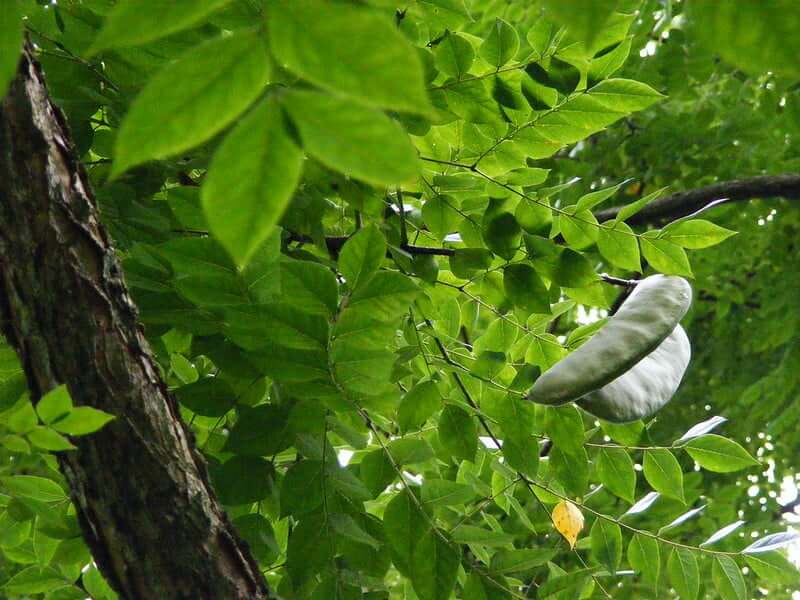
M W | Kentucky Coffeetree | Wikimedia Commons | CC BY-SA 2.0
Utah drought-tolerant native trees and shrubs
Most of the trees that are native to Utah are those that have an average or high tolerance for drought. They are mostly great sources of shadow during the summer and contribute to energy conservation.
5. Oak Gambel
Botanical name: Quercus gambelii
Max height at maturity: 20 -60 feet
Max canopy spread: 15 feet
Growth Rate: 1 – 2 feet per year
Drought Tolerance: Extreme
LifeSpan: 65 years
Gambel oak grows as a shrub or a small tree with an average height of 20– 60 feet and a width of 15 feet.
It is also known as scrub oak and it is most prevalent along the foothills where it provides great fall color, typically forming thickets that are resilient to adverse weather and tolerant of drought. It also is well-suited to urban landscapes where it can grow to be large in size and vibrancy with irrigation provided.
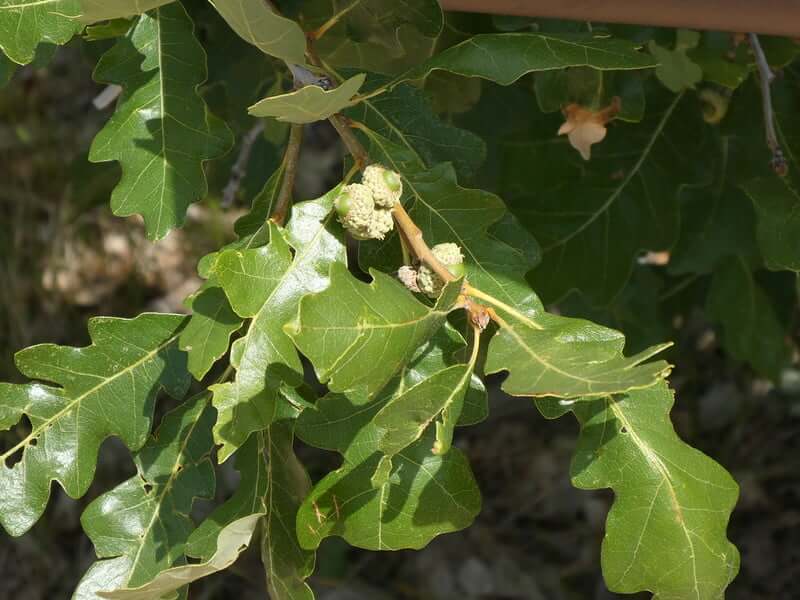
Gambel Oak | DenverDwight | Wikimedia Commons | CC BY-SA 2.0
6. Pinyon Pine
Botanical name: Pinus edulis
Max height at maturity: 20 – 45 feet
Max canopy spread: 50 feet
Growth Rate: 2 feet per year
Drought Tolerance: Moderate
LifeSpan: 800 – 1000 years
The Pinyon Pine grows up to 20 – 45 feet tall at maturity with a spread of about 50 feet. It has formed a primary and historical component of Utah’s pinyon pine-juniper forest.
It is a slightly drought-tolerant evergreen tree that produces seeds relished by wildlife and people alike. Well suited to low water, low maintenance, and landscapes that replicate natural settings.
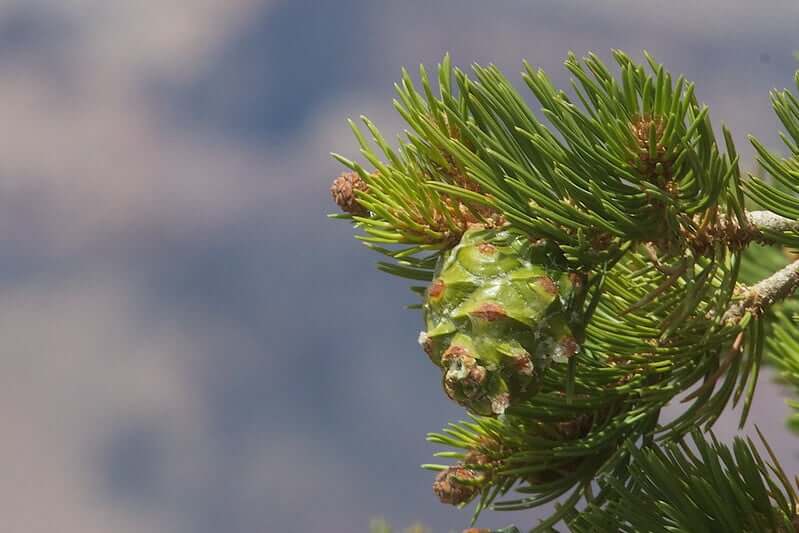
Pinyon Pine Cone | Alan Levine | Wikimedia Commons | CC BY-SA 2.0
7. Rocky Mountain Juniper
Botanical name: Juniperus scopulorum
Max height at maturity: 20 -40 feet
Max canopy spread: 8-12 feet
Growth Rate: 2 ft per year
Drought Tolerance: High
LifeSpan: 300 years
Rocky Mountain Juniper is a highly drought-resistant tree. It is a good choice for visual screening, noise buffering, windbreak, and adaptability to various planting locations. It has a mature height of 20 to 40 feet, a spread of 8 to 12 feet is average, and a slow growth rate of 1 foot per year.
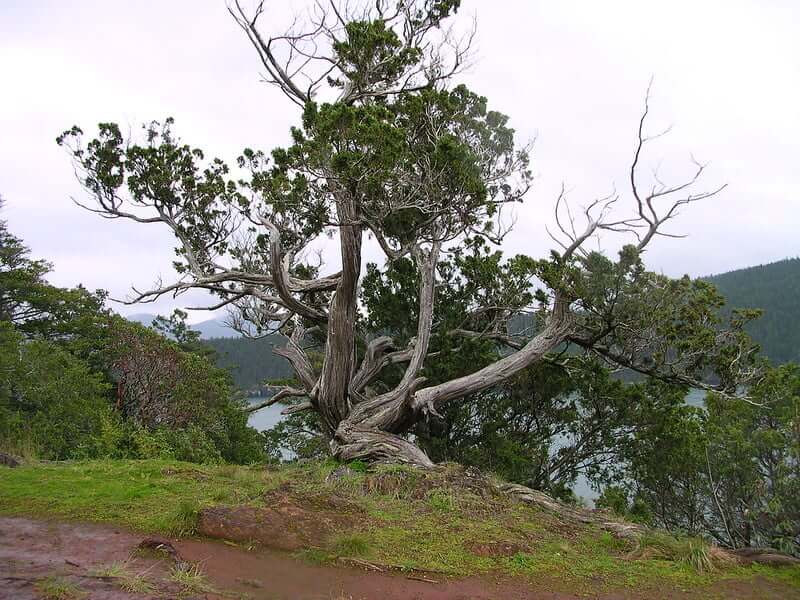
Rocky Mountain Juniper | J Brew | Wikimedia Commons | CC BY-SA 2.0











